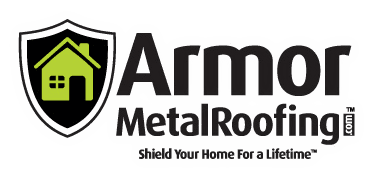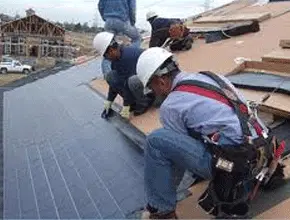How does a new roof add value to a home?
According to many realty and housing pundits, a new roof adds little or no re-sale value to a new home. But what it does add is perceived value, says Indiana real estate expert Mike Puckett. Along those lines, a new roof signifies to potential buyers your home is safe and secure from the elements – and they won’t have to worry about that expense for several years down the road. While a new roof may not result in a higher sale price, its presence helps foster a quicker sale as long as your real estate agent promotes it in any listing materials. Like your home itself, a new roof is an investment in the future.
Factors when considering a new roof
- Impact-resistant roofs can save on homeowner’s insurance premiums. Insurance companies have major concerns when it comes to a roof, mostly because it is a home’s primary defense against wind, hail, rain, snow storms and deep freezes, blistering heat, and debris tossed around by tornadoes or hurricanes. As such, more insurance companies have been willing to pass along savings to homeowners who invest in new impact-resistant roofing materials. Though more expensive than regular shingles, UL2218 roofing materials are also more sturdier, meaning your home’s framework is protected from damage – not to mention interior walls, ceilings, and personal belongings. Madelyn Flannagan, a vice president with Independent Insurance Agents & Brokers of America, claims impact-resistant roofing materials can save five to 10 percent on home insurance costs because of all the other potential damage they can prevent.
- According to the United States Department of Energy, heating and cooling expenses cost the average homeowner more than $1,000 each year, with $40 billion spent collectively on air conditioning – or one sixth of electricity generated nationwide. For these reasons alone, homeowners need to consider the benefits of energy efficient roofing materials, or those that are ENERGY STAR certified. ENERGY STAR roofing products are proven to reflect more of the sun’s rays than traditional roofing materials, reducing a roof’s temperature by up to 100 degrees. Because there is less heat, there is reduced demand for air conditioning and electricity, up to 10 to 15 percent less than there would be under other circumstances.
- Variables. Many variables contribute to how much a new roof may add to a home’s perceived value. These include the condition of the roof it replaces, the condition of roofs on similar homes in your neighborhood, and the style of the new roof itself.
- Curb appeal. Any realtor will tell you the value of your home – perceived or otherwise – is driven by curb appeal, a somewhat nebulous term that mostly encompasses obvious features like landscaping, decks and patios, a garage door, and the condition of a home’s roof. A new roof adds curb appeal because it looks nice and may be a valuable indicator of the condition of the rest of a home. Adding to a roof’s curb appeal are colors and shingle style, and how it stands out compared to other roofs.
- Prevent mold. According to some studies, the cost of mold remediation for a typical homeowner can be up to $5,000 – none of which would need to be spent if a home is protected by a newer, well maintained roof. Remember, old, leaky roofs can turn your attic into the perfect, unseen breeding ground for health hazards attributable to mold and mildew.
- Help maintain a cleaner environment. Some of the energy savings realized through a new roof can steer homeowners down the path to a greener future. Besides energy efficiency, many new roofing shingles are made from recycled products, while wood used for joists and soffits is milled from sustainable sources.
- More durability. There’s an old adage that “things aren’t made the way they used to be,” but the fact of the matter is many older homes have roofs that should have been replaced years ago, and those aging roofs are more susceptible to failure from weather and other factors. Homeowners can save on unnecessary expenses and hassles by replacing an older roof before something goes wrong.
- Possible tax deductions. Having a new, energy efficient roof installed could result in the added benefit of a year-end tax deduction. Check with the Internal Revenue Service or a tax professional about what types of energy efficient deductions you may qualify for before getting a new roof.
- Security. While a new roof is more energy efficient and will protect your home from damages caused by wind, rain, or snow, it also will protect your home from the other bane of Mother Nature – namely birds, squirrels, bats, rodents, raccoons, and other small animals. Attics are a favorite breeding ground for bats, many of whom can easily squeeze behind eaves, shingles, or corroded fascia boards. Some bats, in fact, have been known to squeeze through holes less than an inch in diameter.
Before selecting a roofing contractor
To the naked eye, poor quality roofs are difficult to distinguish and can hide signs of problems for years or even decades. Because getting a new roof if a major investment, you need to be careful when searching for and selecting a roofing contractor. Here are things to look for in a roofing company:
- A portfolio of previous work. Ask to see before and after pictures, and references from satisfied customers that you can call at your convenience.
- A commitment to using the best materials, and backing up their work with a generous guarantee that covers not only materials, but labor needed for repair or replacement.
- Search for roofers who carry the designation of Certified Master Elite Roofer. It is estimated that only 2% of all roofers in America carry this distinction, meaning they perform the highest quality work and back it up with the strongest warranty available.
Finally, while a new roof may not add definitive value to a home, its perceived value, attractiveness to potential buyers, and the peace of mind it offers to the owner are worth the expense.

